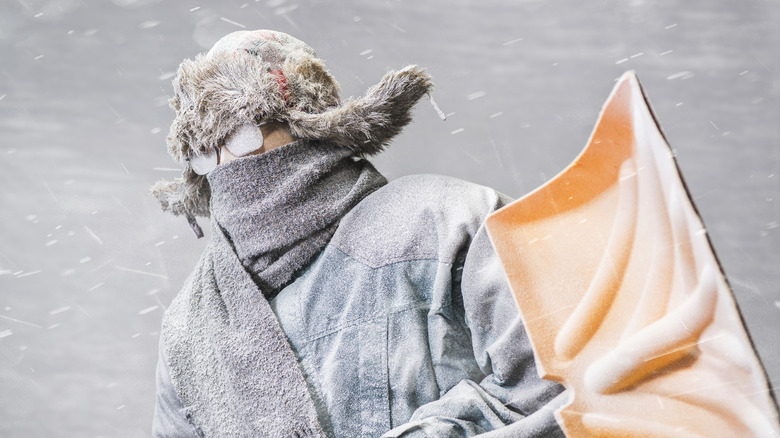 Mulevich/Shutterstock
Mulevich/Shutterstock
We may receive a commission on purchases made from links.
When winter comes and snow piles up it can look magical from the window, but these conditions present brutal challenges to motorists and homeowners for months out of each year. Ice can accumulate in dangerous sheets on rooftops, steps, and roadways, extreme cold makes engine oil and diesel fuel behave strangely, and batteries die faster in the winter. To complicate things further, you often have to clear snow from your doorway, car, and elsewhere before you can even head out.
Manual shoveling is tiring at the very least and can lead to serious injuries if not done right. And even if you have one of Home Depot's best snow blowers, working in the cold and wind isn't much fun. To avoid injury while using a regular shovel, take small scoops and bend your knees to lift and toss each one. We have plenty more good advice on how to make clearing snow easier and safer, some of which you can act on before the first flakes come down.
Invest in the right gear
 Cmannphoto/Getty Images
Cmannphoto/Getty Images
According to the Nationwide Children's Hospital in Columbus, Ohio, "snow shoveling leads to approximately 100 deaths and 11,500 injuries" each year in the United States. Heart-related incidents are common, as are slips and falls that result in bruises, cuts, and broken bones. Bending at the waist instead of the knees to lift will cause lower back injuries, as can using the wrong shovel. Pick one that weighs less than three pounds and reaches the ground with a slight bend of your knees. The Snow Joe dual-handle shovel comes in 18 and 20-inch sizes from Amazon and has an average rating of 4.5 out of 5 stars from more than 27,000 buyers. A powered option like the Ryobi One+ 18V Electric Snow Shovel might be a better choice for anyone looking to save a little wear and tear on their body, but these tools have their limitations.
It's also important to wear the right winter clothing when you're shoveling snow. Be sure to have insulated work gloves, face protection like a mask and goggles, a warm hat that covers your ears, and an insulated or heated work jacket. Shoes matter just as much; regular sneakers or loafers won't cut it on icy walkways. It's advisable to invest in sturdy footwear with solid insulation and good traction; layering socks and upper body clothing provides added protection from cold, wind, and moisture.
Prep your surfaces and gear before storms hit
 Elena Elisseeva/Shutterstock
Elena Elisseeva/Shutterstock
Once you have the right equipment it's important to prepare your sidewalk and driveway to make the job go more smoothly. When you anticipate a snowstorm, applying a bit of salt to these surfaces will help once the snow has fallen. Salt lowers the freezing point of water from 32ºF to about 15º, so it won't do anything if the temperature stays below that point. If it's not too cold, though, salt helps keep fallen snow from freezing, making it much easier to remove. The salt used for winter de-icing has environmental contaminants and can corrode metal and concrete, so use it sparingly and clean it up after you're done.
For small areas that need to be cleared quickly you can lay down a tarp, especially if you only expect light to moderate snowfall. Moving a tarp with a few inches of snow on it is sometimes easier than shoveling, but you can always give your shovel a non-stick upgrade. A thin coating of cooking oil spray will make snow slide off of your shovel as easily as food from a well-prepared pan.
Clear snow in phases while it is still falling
 JuliaDorian/Shutterstock
JuliaDorian/Shutterstock
One of the biggest mistakes snow blower users make is waiting until all the snow has fallen to clear it away. This makes a big difference in how tiring and time-consuming the job is, as snow becomes harder to remove as it piles up. If you want to manage snow buildup and save your muscles, it's best to shovel in multiple lighter rounds. If a storm is expected to last all day, try to clear it every few hours before temperature changes and foot or vehicle traffic render the fluffy powder into immovable slush and ice.
You might even be able to sweep freshly-fallen snow from your walkways and driveways with a stiff-bristled broom instead of lifting and tossing it aside with a shovel. It's also easier to clear snow and ice from atop your car every so often instead of waiting for the storm to end, and it's dangerous to drive with any amount of snow and/or ice on your vehicle. You could be cited if your vision is obstructed, and snow and ice falling from your car might cause an accident.



